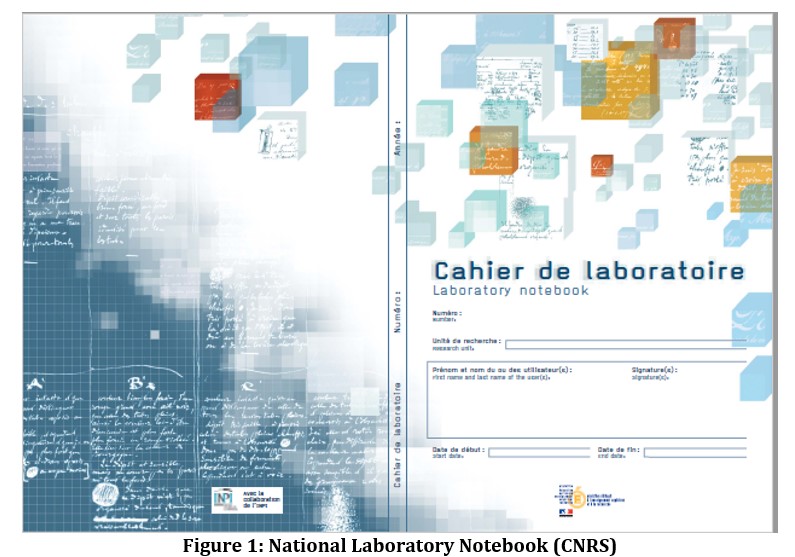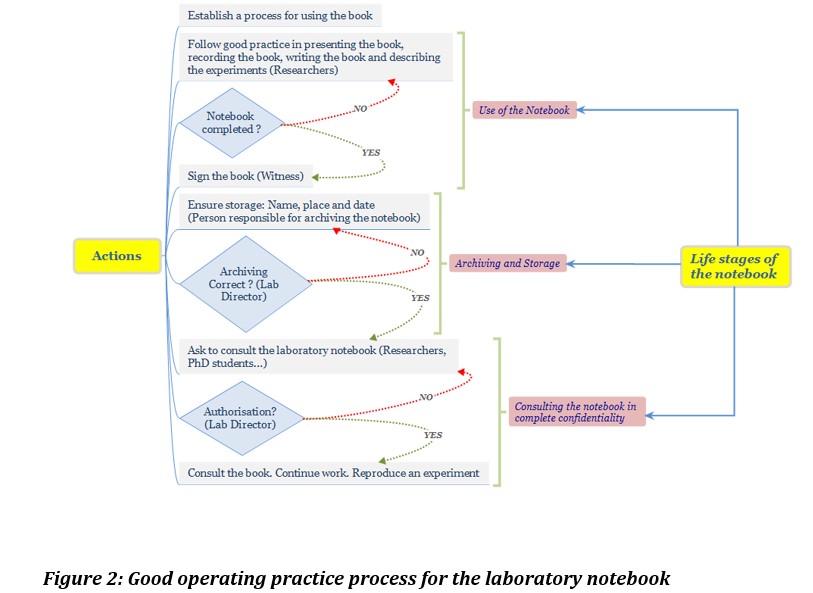article written by Jana Darwiche
Since 2007, the CURIE network has worked with a number of partners such as the CPU, the Ministry of Research and research organisations to provide public research researchers with laboratory notebooks. The range is available in two formats: rigid and normal. The difference between the two is the format (A4+ and A4), the number of pages (100 or 200 pages), the quality of the cover and the price.

• To keep a record of the experiments carried out in the laboratory
The laboratory notebook ensures the conservation and transmission of knowledge. It guarantees, on the one hand, results reproducibility and, on the other hand, avoids having to repeat experiments for lack of sufficient memory. By making the tests explicit, it guarantees the continuity of the work. Grenoble INP, like all research organisations, encourages staff to use the notebooks: they provide a real state of research and experimental results.
• To prove the date of the work
In the context of partnerships, the laboratory notebook makes it possible to trace the origin of inventions and thus determine the rights to these breakthroughs. It is useful for determining the author of the first invention and establishing the co-inventors. It is a proof of ownership of the results.
• To defend patents
In Europe, when several people are working on the same research subject, the patent right belongs to the first applicant, i.e., the one who first filed. In the United States, the right to a patent belongs to the first inventor, i.e., the first applicant who can prove it (date and witness).

What is the purpose of the laboratory notebook?
The laboratory notebook is a tool that ensures the traceability of research and innovation. Developed by the CURIE network and the Ministry of Research, in collaboration with INPI, it allows staff (teacher-researchers, engineers, technicians, doctoral students, post-doctoral students, trainees, etc.) to record their research activities in an evidential manner.What does it look like?
In its paper version (Figure 1), the laboratory notebook takes the form of a notebook. On the cover are the names of the owner and users. It is a day-to-day register in which working hypotheses, tests carried out, results obtained, new projects, etc. are recorded on numbered pages. Each page is dated and signed by the researcher and a witness.Since 2007, the CURIE network has worked with a number of partners such as the CPU, the Ministry of Research and research organisations to provide public research researchers with laboratory notebooks. The range is available in two formats: rigid and normal. The difference between the two is the format (A4+ and A4), the number of pages (100 or 200 pages), the quality of the cover and the price.

Why use it?
The laboratory notebook is a crucial tool. It fulfils several objectives:• To keep a record of the experiments carried out in the laboratory
The laboratory notebook ensures the conservation and transmission of knowledge. It guarantees, on the one hand, results reproducibility and, on the other hand, avoids having to repeat experiments for lack of sufficient memory. By making the tests explicit, it guarantees the continuity of the work. Grenoble INP, like all research organisations, encourages staff to use the notebooks: they provide a real state of research and experimental results.
• To prove the date of the work
In the context of partnerships, the laboratory notebook makes it possible to trace the origin of inventions and thus determine the rights to these breakthroughs. It is useful for determining the author of the first invention and establishing the co-inventors. It is a proof of ownership of the results.
• To defend patents
In Europe, when several people are working on the same research subject, the patent right belongs to the first applicant, i.e., the one who first filed. In the United States, the right to a patent belongs to the first inventor, i.e., the first applicant who can prove it (date and witness).





